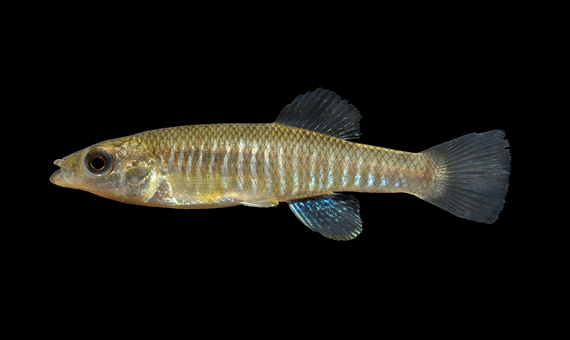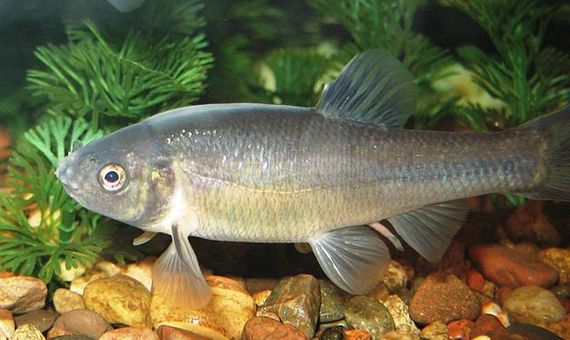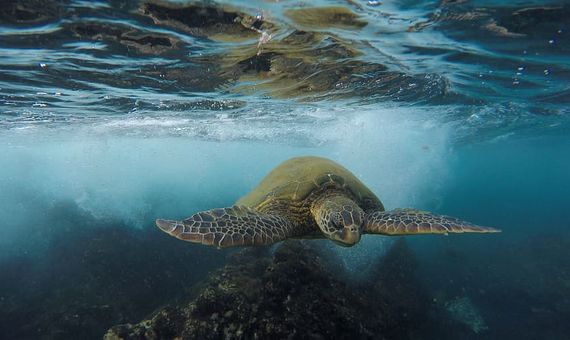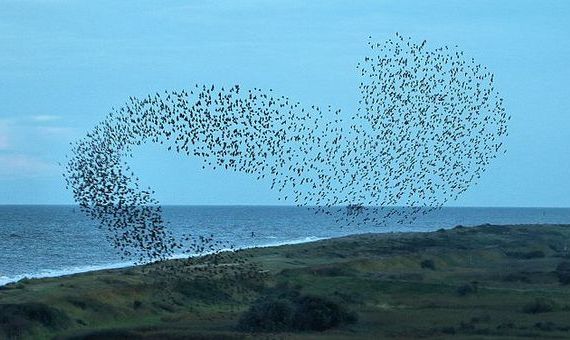Fifty years ago, the link between chemical contaminants and strange changes in animal behaviour was first demonstrated. This human-caused epidemic is capable of modifying the way different species communicate, move or reproduce. Since then, researchers have uncovered scores of cases in which the chemicals found in pesticides, pharmaceuticals and other compounds are affecting the behaviour of wildlife, reminding us to remain vigilant when it comes to monitoring the substances that are released into the environment.
American lobster (Homarus americanus)

In 1971, researchers at the Woods Hole Oceanographic Institution demonstrated for the first time how the presence of chemical pollutants in the environment affected the behaviour of an animal species and compromised its survival. Specifically, the pioneering study experimentally proved that the presence of kerosene residues in the water, even at very low concentrations, increased the aggressiveness of lobsters, leading to more disputes and attacks between individuals.
Soluble aromatic hydrocarbons in the fuel interfered with the detection of compounds that mediate chemical communication between lobsters. This ability to detect chemical compounds in water—equivalent to the sense of smell in land animals—allows lobsters and other marine life to recognise the territorial markings of fellow members of their species, locate potential food sources, detect conspecifics and potential predators, follow migratory routes and find mates for breeding.
Banded killifish (Fundulus diaphanus)

For killifish of the species Fundulus diaphanus, even brief exposure to low concentrations of the compound 4-nonylphenol, a surfactant commonly used in the production of soaps, detergents and other cleaning products, has been shown to interfere with the fish’s ability to cluster in shoals by altering the chemical signals that serve as a communication channel between individuals. This disruption seriously compromises their survival as it is their main defence mechanism against predators, which are confused by such an accumulation of potential prey. Furthermore, the formation of large schools optimises the localisation of food sources and the detection of potential threats.
Fathead minnow (Pimephales promelas)

Antidepressants and anxiolytics are currently the most widely consumed drugs in the world and, as a result, many of them—or their active ingredients or derivatives—end up in wastewater discharged into the sea. Even highly diluted compounds can enter the brains of fish when they are exposed to them at an early stage of their development.
For example, it has been shown that embryos or hatchlings of fathead minnows exposed to antidepressants react less quickly to danger signals and are slower to flee in the presence of a predator. Antidepressants have also been found to curb the fish’s appetite and interfere with its ability to find food and mates. In the specific case of fluoxetine (Prozac), one of the most commonly prescribed antidepressants, it behaves like an oestrogen in adult fathead minnows and can lead to the inhibition of their sex characteristics, which help them to establish their social position and court females. In addition, these males display “maternal” behaviours such as increased aggressiveness in protecting nests.
Loggerhead sea turtle (Caretta caretta)

There are more and more cases of marine animals captured or recovered with their stomachs full of plastic. Loggerhead sea turtles are no strangers to ingesting plastic, and it is now known that this is not accidental. As has been experimentally proven, turtles confuse the air-borne smell of many ocean-stewed marine plastics with that of their usual food. These plastics release dimethyl sulphide, a gas that is also produced by phytoplankton, the main source of oceanic food, which confuses many species of fish and seabirds. Now we know that turtles are similarly confused, presumably because some of their favourite prey also smell like this when feeding on phytoplankton.
Atlantic salmon (Salmo salar)

One of the key stages in the life cycle of salmon is the migration of juveniles downstream to the sea. This is a time of great stress and anxiety for the young salmon as they face an unfamiliar environment, which from a survival point of view is essential to keep them in a permanent state of alert. However, it has been shown that the presence of anxiolytics such as oxazepam in the water affects salmon smolt and modifies their migratory behaviour. The drug reduces anxiety in juvenile salmon, leading to more “risk-taking” behaviour, which means that they begin their migration more quickly—before they are fully ready—and they erratically explore the new environment in all directions instead of starting their descent immediately; they also neglect to keep an eye out for potential predators. What is remarkable is that at one point the use of anxiolytics on hatchery-raised salmon, which find it more difficult to start their journey to the sea, was even suggested as a means to stimulate their urge to migrate and bring it into line with that of wild salmon.
European starling (Sturnus vulgaris)

Although marine animals are the most at risk due to the widespread discharge of contaminants into the water—and are therefore also the most studied—behavioural alterations and the impairment of faculties are not exclusive to the aquatic realm, as chemical pollutants are nowadays omnipresent in the environment. One example is that of polychlorinated biphenyls (PCBs), compounds that were widely used in industry for years and which, although they have now been almost completely banned, are still present due to their high persistence. It has been proven that when these PCBs reach starling chicks, they affect and impair their learning capacity and spatial memory, fundamental skills for their migrations and also for remembering the location of food and nesting sources. In addition, early exposure to PCBs is also thought to affect other behaviours that also depend on learning and memory, such as the duration and complexity of courtship songs, on which their reproductive success depends.
Indian vulture (Gyps indicus)

The introduction of chemical pollutants into the environment can affect an ecosystem in many ways. In fact, their impact is rarely restricted to a single species, but the consequences can spread across the whole ecosystem. One of the most obvious and high-profile examples was the so-called “Indian vulture crisis,” when between 1991 and 2007 the population of these scavenging birds in India plummeted by 99% before the cause was identified: diclofenac, an anti-inflammatory drug widely used in animal husbandry. Vultures feeding on the carcasses of animals recently treated with the drug were dying of kidney failure within a month. The drastic decline in the vulture population triggered a cascade of undesirable effects: their absence led to an overabundance of carrion, which resulted in a proliferation of feral dogs in the vicinity of populated areas, which in turn multiplied the number of dog attacks on people and thus an epidemic of rabies in humans. It was estimated that canine attacks increased by over 38.5 million during this period, resulting in 47,300 additional rabies deaths and costing the Indian economy $34 billion.
Comments on this publication